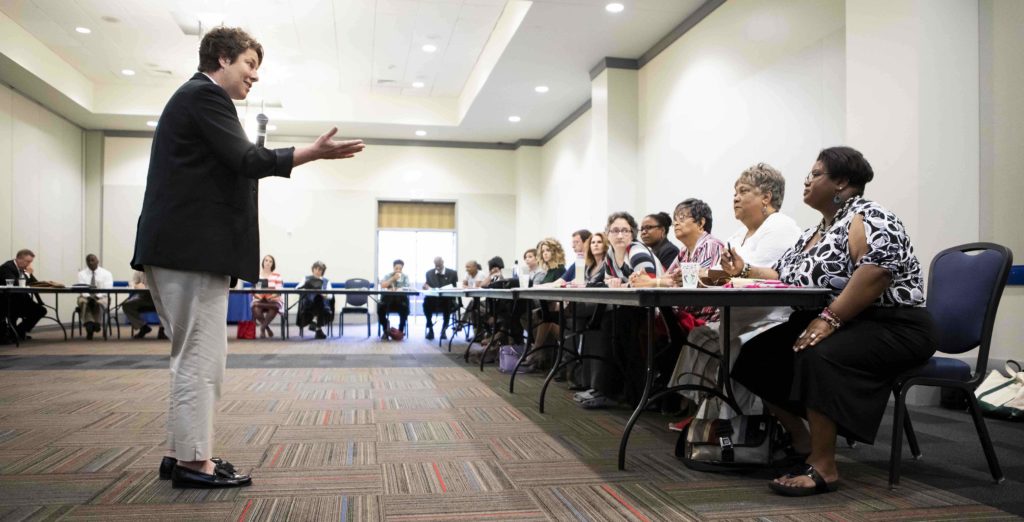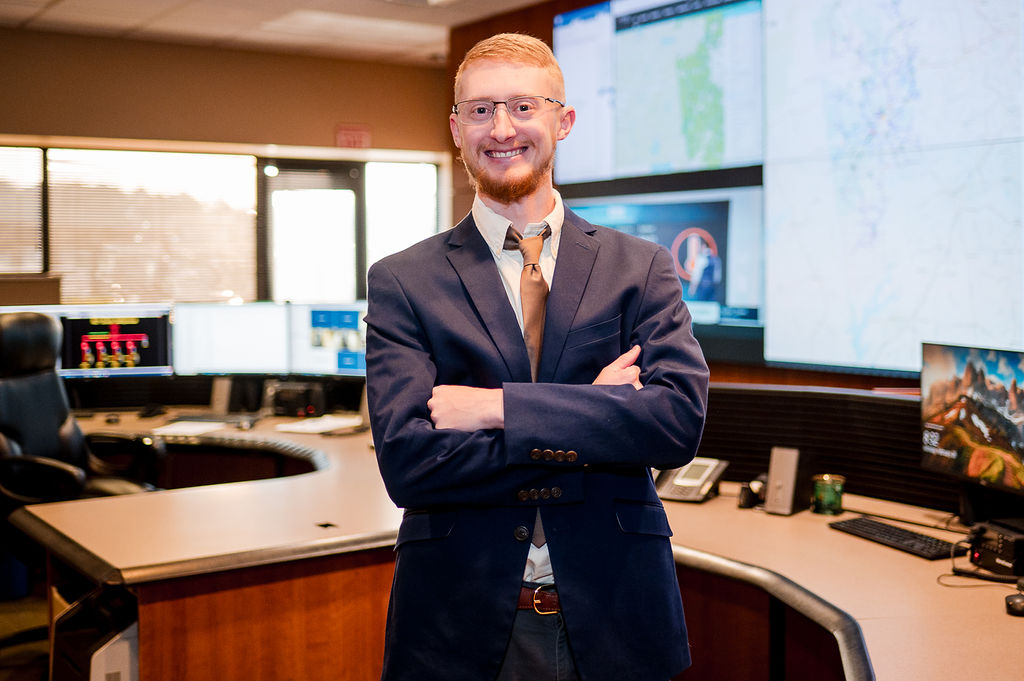
Work that began last year to gain a cultural understanding of the University of West Georgia’s campus reached another milestone Monday, with numerous community partners meeting with university representatives to discuss the project’s progress and future.
The university recently sponsored an archaeological survey of an area between Front Campus Drive and the center of campus in which archaeologists discovered evidence of the strong possibility that a cemetery is present in the area.
The findings are consistent with historical reports that place a cemetery on the former Bonner Plantation that is now the UWG campus in the grassy area between Melson Hall and the Old Auditorium.
“These findings immediately prompted us to notify descendant family members of the enslaved persons connected to the Bonner Plantation,” said Dr. Yves-Rose Porcena, UWG’s chief diversity officer. “We also continue to invite community members and other descendants to assist with sharing their historical accounts, and we’re working on ways to connect with them to ensure their recollections are captured as part of an oral history project.”
In an ongoing effort to connect with community members to bring honor and reverent remembrance to the endeavor, university representatives met Monday with several community partners – including descendant family members of the enslaved persons connected to the Bonner Plantation.
“The purpose of this meeting was to share information and hopefully create some next steps we can take to continue the collaborative process we began at the outset of this project,” said Porcena, who led the meeting. “Engagement with the community is what we do at UWG, so we want to continue the pattern of working with all sectors of the community members to ensure all voices, stories and opinions are heard.”
Present at the meeting were representatives from the descendant families; the Carroll County chapter of the NAACP; the Carroll County Genealogical Society; the Carroll County Cemetery Oversight Committee; the local media; First Baptist Church of Carrollton; and the Carver High Museum.
“Members of the community I’ve spoken to just want to find out all the information they can about the history surrounding this cemetery and share what they know and remember, as well,” said Valarie Bonner, a descendant of Abe Bonner, an enslaved person who lived on Bonner Plantation in the middle of the 19th century. “Overall, I think the discovery of this cemetery has been – and will be – a great thing for this community as we can join together and celebrate our ancestors.”
Representatives from more than a dozen university offices and departments – including the Center for Diversity and Inclusion, the Center for Public History and Academic Affairs – were also present. For a full list of project partners represented, visit: https://www.westga.edu/news/bonner-plantation/project-partners.php.
Dr. N. Jane McCandless, the dean of UWG’s College of Social Sciences, shared her impressions of the project so far, saying she learned of the possibility that a cemetery was present on the university’s campus in August 2018.
“There were many stories out there before my voice entered this conversation last year when I heard this information from one of my former students – the great-great-granddaughter of Abe Bonner,” McCandless said. “It was a student of mine who educated me in that moment. I’m still grappling with the fact that I’ve walked this campus for 30 years and didn’t know this piece of its history.”
Several scenarios intersected to prompt exploration of the area: preparation of a facilities fiber installation project on campus activating discussion of potential disturbance to the area; a community member – who was present at Monday’s meeting – coming forth in a community forum to suggest the ground near Melson Hall could potentially be the location of a cemetery; and the recent launch of the UWG History Project as an avenue for proper data collection and preservation of the institution and region’s rich history, should historical resources be located.
Under consultation with the Georgia Office of the State Archaeologist and the University System of Georgia, UWG sponsored the survey to be conducted by Southern Research, Historic Preservation Consultants Inc. as the first step in an ongoing project of discovery.
“It’s really a pleasure and honor to be back at UWG to provide everyone with as much information as can glean from what’s in the soil to ensure the university does the right thing,” said Dean Wood, principal archaeologist with Southern Research. “At no time were any remains disturbed – or even encountered – during this project.”
Archaeologists first used a non-invasive ground-penetrating radar to examine areas where historical documents suggested a cemetery might be located. Two areas were chosen for analysis, and the top 12-18 inches of soil was carefully removed until the tops of possible grave shafts were recognized. At this point, no further analysis was undertaken.
With the initial investigation complete, a possible next step is to determine the cemetery’s boundaries through similar analysis as previously used.
The university has launched a website to capture project milestones and inform the public on ongoing progress. The website – which currently includes information on project partners, a timeline of events, a glossary of terms and answers to frequently asked questions – can be viewed here: https://www.westga.edu/news/bonner-plantation/index.php.
One community partner – John Wright, chairman of the Carroll County Cemetery Oversight Committee – complimented the university on its efforts to honor and memorialize the sacred ground.
“With each passing year, more and more cemeteries in our nation and community are disappearing,” Wright said. “The Bonner Plantation cemetery was one of them, but now it’s been found, and anything we can do to ensure it’s memorialized is incredibly worthwhile.”
For more information and updates to the Bonner Plantation archaeological survey, visit https://www.westga.edu/news/bonner-plantation/index.php.





